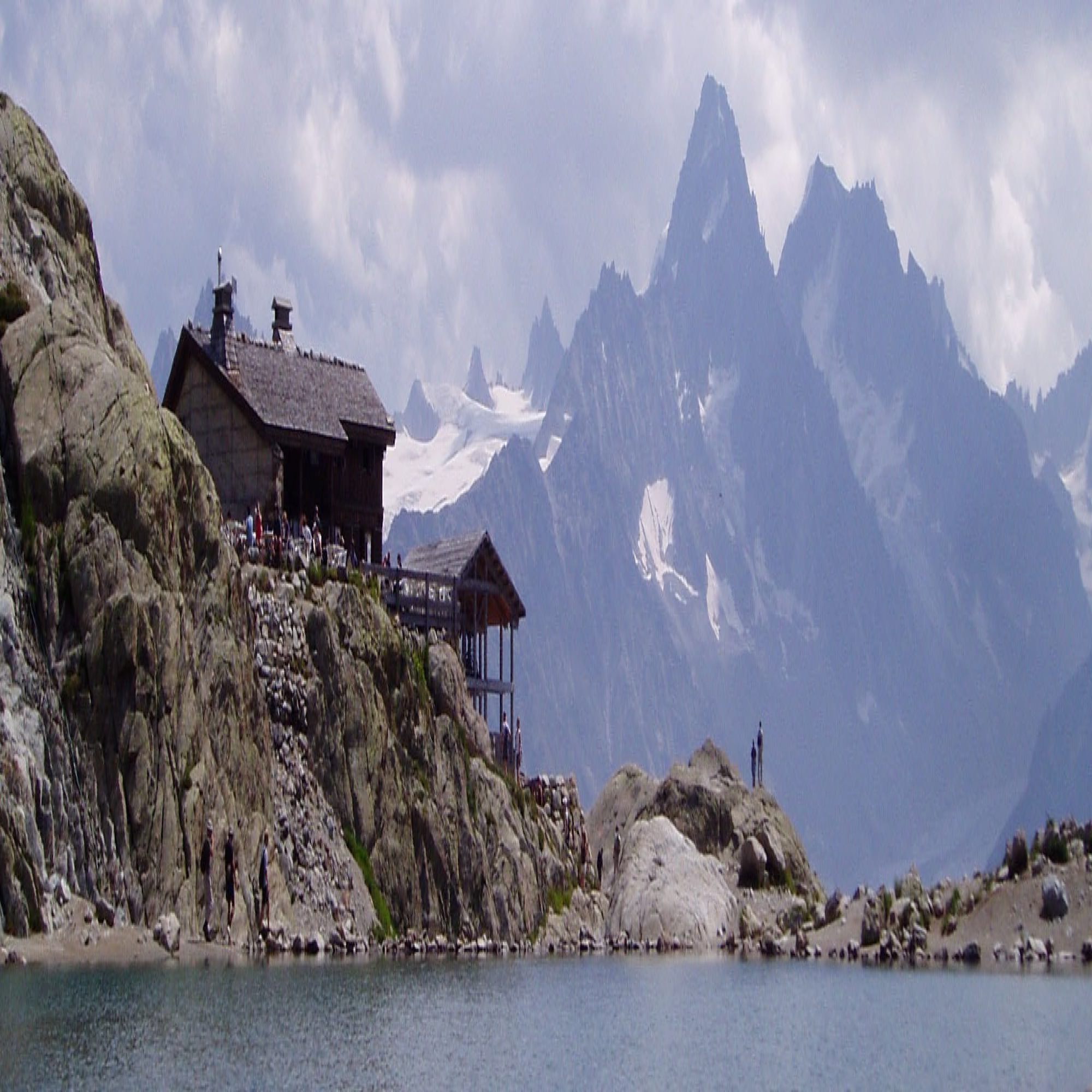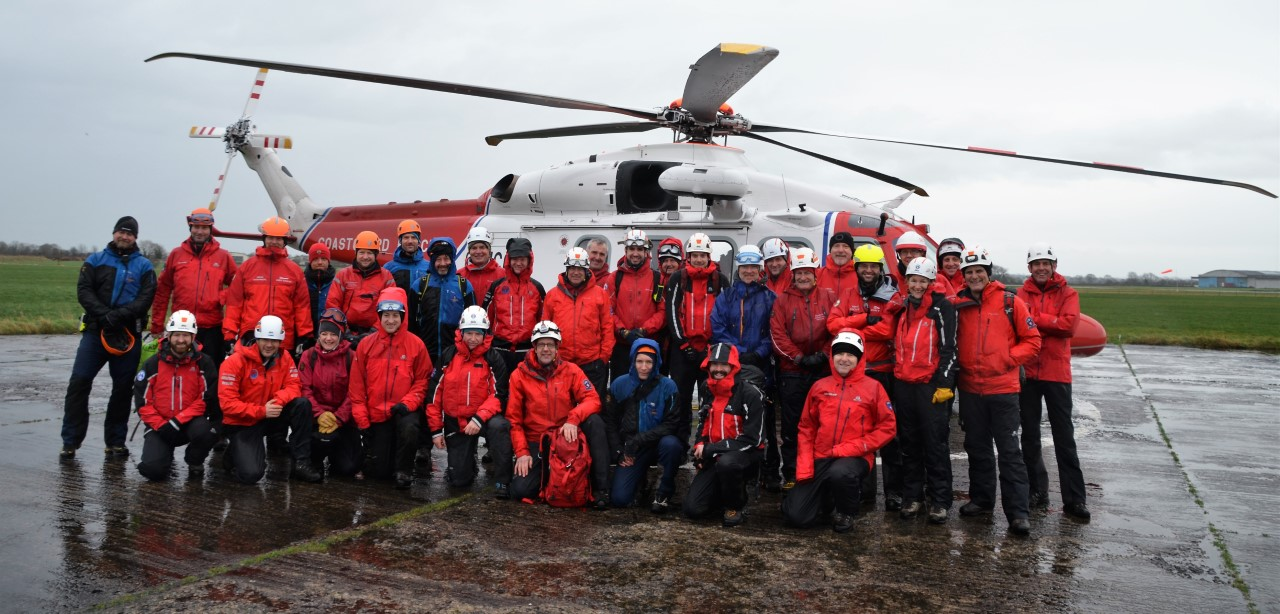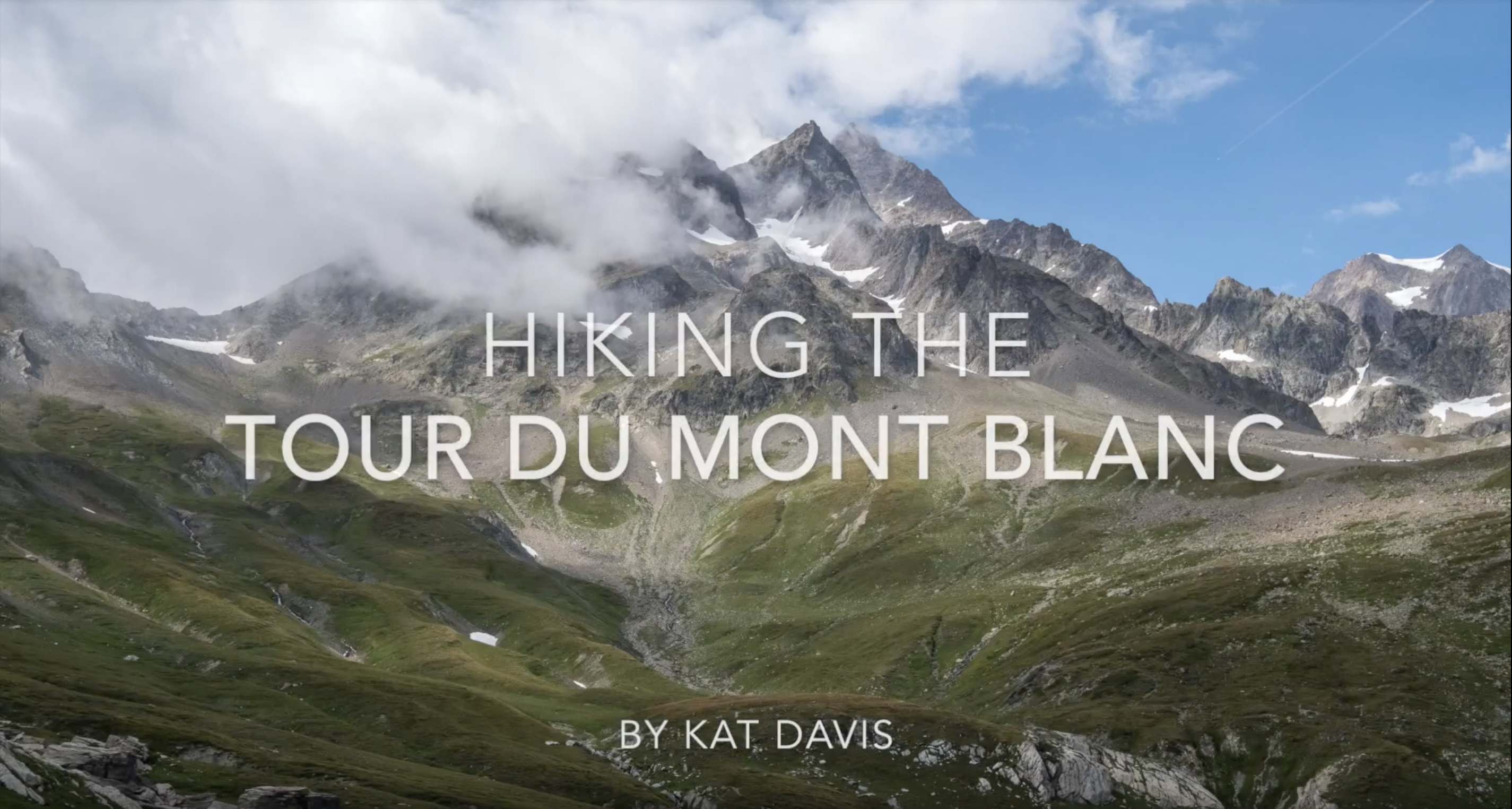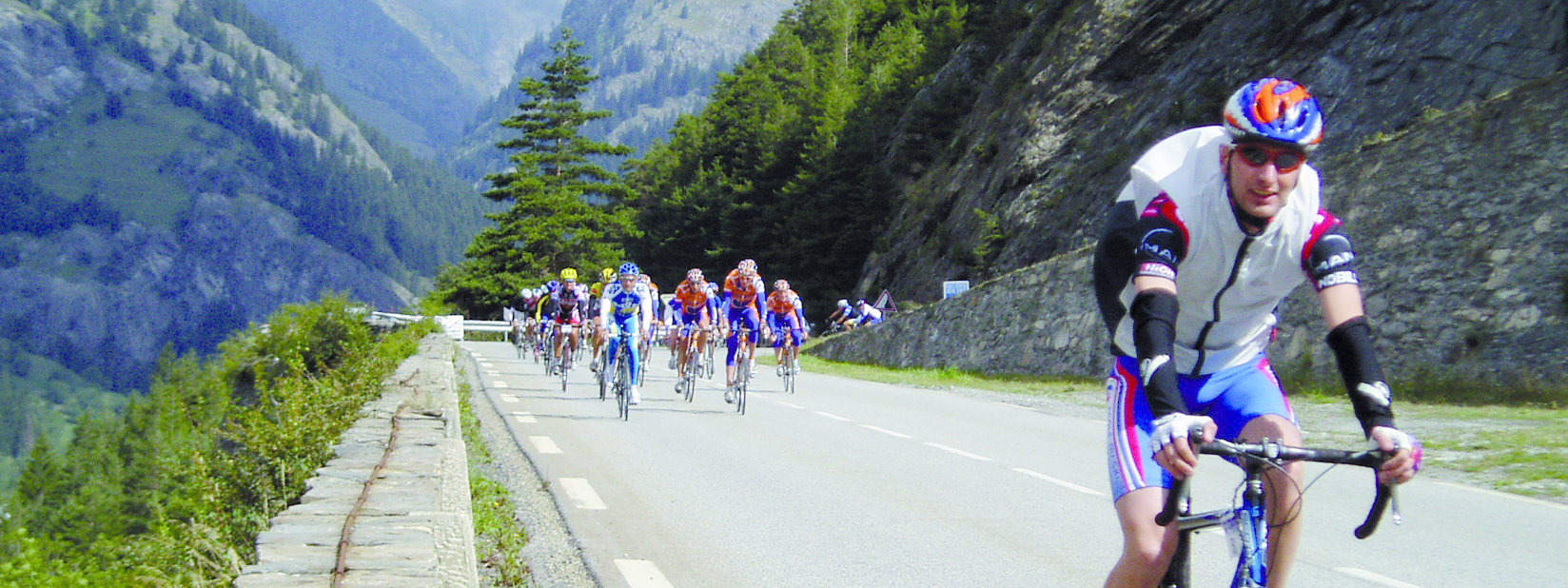Valley deep, mountain high: A journey towards the International Mountain Leader Award
For those wishing to trek the world's mountains, the highest standard of leadership is the International Mountain Leader Award, which a number of Cicerone writers hold. Andy Hodges, author of Mountain Adventures in the Maurienne, has been working towards it since 2011, and in March 2018 it was time for his final summer assessment. For those wishing to travel independently, Cicerone guidebooks offer a similarly high standard of advice.
Sixteen nervous men and women were sitting in a chalet. The snow was falling in fat, heavy flakes outside and they waited. For several years they had trekked across the highest mountains in Europe and further afield in summer and winter; in rain, fog, snow and wind. They had already been through at least three gruelling assessments in the mountains of Britain and Europe; the past five days had been their final one. Days of snowpack analysis, avalanche rescue drills, micro-navigation in unfamiliar forests, where most of the map features lay under the better part of a metre of snow. Welcome to the world of the International Mountain Leader – the highest walking leader award there is.
To even begin this award a candidate has to have completed the prestigious Mountain Leader (Summer) Award; to complete it requires an expert knowledge of summer and winter mountaincraft.
Standing nervously shuffling my feet among these people was an honour. Each was highly skilled and vastly experienced. One of my colleagues returned, beaming and a little bit tearful – pass. Now it was my turn.
The introduction
My journey towards this point began many, many years ago when, on a rain-soaked morning, I stepped out of a hotel in les Houches with my wife at my side and a Cicerone guide in my hand. Many Alpine adventures begin with the TMB (Tour du Mont Blanc) and with the ever-reliable Cicerone guidebook. Both Sue and Cicerone Press have been my companions ever since.
I still have the Alan Harper guidebook (replaced by Tour of Mont Blanc), handwritten notes in the ample margins. The book has done at least four tours and has now been retired but will always hold a place in our hearts. The book and the route changed our lives.
From those humble beginnings we've trekked, skied, climbed and cycled across, through and around the Alps. Cicerone guidebooks have always been by our side.
To be counted among the band of brothers and sisters that are the Cicerone writers was something I couldn't even comprehend as being possible all those years ago.
After the TMB we ventured to the Stubai for the Rucksack route (Trekking in the Stubai Alps) with a friend who had never been trekking before. He was surprised at our slick hut routines and, after some 'advice' from the guardian, quickly learned the etiquette of removing boots before entering a refuge! Unseasonable snow and bad weather added to the experience, and finding the Union Flag flying at 2900m was an unexpected moment deep in the Austrian Alps.
Time marched on and we discovered the Vanoise National Park – one fine morning on the summit of the Domes de Miage with a French guide, he pointed out the range of mountains. We'd never even heard of them, and he explained that that was his holiday range.
If that was where a guide, the most hallowed of mountain professionals, spent his holidays then it was somewhere we had to visit.
We liked to climb and were disappointed to discover there was no useful English guidebook to the area. The excellent Tour of the Vanoise helped but the high mountains meant translating a French book. (I wish I'd listened to Miss Skepper more carefully in French lessons at school, one of my least favourite subjects).
A close call following a mistranslation resulted in a decision to write a guidebook. Incredibly, Jonathan Williams saw the potential and agreed to take it on as a project. Mountain Adventures in the Maurienne was conceived, high on the slopes of Tete d'Aussois; three years later it was born.
It was in the Vanoise that we discovered the comical marmot, abundant here but rare elsewhere; the majestic ibex (locally called bouqetin) in large numbers after recovering from near extinction in this part of the Alps; gazed admiringly at the soaring bearded vulture and first encountered the protective 'pastou' – the large, white guarding shepherd dog, reintroduced to protect flocks from wolves, which are returning to the Alps from Italy. My desire to open the mountains and adventures of the Alps to others was further kindled by the experience of writing the guidebook and I signed up for the International Mountain Leader Award. A week in the Cairngorms at Glenmore Lodge began the process with 'Summer Training' and a brutal 90-minute Speed Navigation Test had to be completed to allow me to take the next step.
Mountain days
The individual feedback suggested I had much more than the required 20 International Quality Mountain Days, but that the vast majority were in the Maurienne (four summers there working on routes for the guidebook meant I knew the area pretty well). Prior to putting myself forward for Summer Assessment, I needed to add a variety of experiences. Cicerone came to the rescue with an unending array of enticing mountain regions to explore.
We spent a week in Slovenia exploring the breath-taking Julian Alps (The Julian Alps of Slovenia), our trusty guidebook in hand. These limestone mountains, the 'tail-end' of the more famous Dolomites, proved to be as spectacular as the guidebook had inferred.
High routes, hard rock and fascinating cultural experiences meant it was a week I'll never forget and a place we'll certainly be returning to.
The nearby Bavarian Alps (Walking in the Bavarian Alps) added another week of IQMDs, as well as beautiful days out in fabulous mountains; walking from the St Bartolome to Schönau am Königssee meant learning cartographical differences the hard way. Having failed to look at the key for the map I was very surprised at the ascent; it was only six contours on the map. Little did I realise the contour interval was 100m, not the more usual 20m in the Alps! You live and learn – the lifeblood of experience; experience is an essential aspect of the IML Award, some of it has to be learned the hard way! A rare 'day off' in Salzburg allowed us to explore this beautiful city and experience something of TheSound of Music when we stayed in the Von Trapp home for the night. IML experience also includes the culture and history of the regions!
Our next visit was to Lago di Garda and the Dolomites (Via Ferratas of the Italian Dolomites: Vol 2), which was a perfect early season venue with a range of days out including some steep, challenging Via Ferrata as well as more gentle routes that were predominantly walks with a few rocky moments, perfect for polishing my IML rope work.
Adventures further afield beckoned and my first experience of organising a small-scale expedition from scratch was to lead a team of fellow Dartmoor Search and Rescue Team (Tavistock) members on a visit to Morocco. With the newly printed guidebook in hand (Mountaineering in the Moroccan High Atlas) and a recently released map I felt ready for the heights of the Atlas in winter.
Never off duty, we rescued a lost Polish climber and showed him the error of his route-finding with the trusty guidebook. He told us nothing in Poland compared with our Cicerone guidebook.
Summer Assessment
And then, before I knew it, I had amassed over 70 days’ experience and felt ready for Summer Assessment. Self-reflection meant I knew my weakness was Alpine flora, so Cicerone's Alpine Flowers became a resident of my trekking trouser thigh pocket. I chose the Tour of the Matterhorn as a warm-up walk to ensure I was prepared for the assessment week in nearby Villars. What a walk! With days at the very edge of mountain walking (and occasionally veering into mountaineering), it was the perfect opportunity to rehearse protective rope work and as it ventures from the hot lower valleys to glacial mountain passes the flora was as varied as the weather.
Summer Assessment was a long first day with plenty of flower spotting in the meadows and high pastures around Villars; thankfully, the comprehensive The Swiss Alps was part of my pre-visit reading so I was prepared and aware of the various cantons, valleys and villages of the region. A tough three-day trek was the mainstay of the assessment and the Western Bernese Oberland didn't disappoint. Technical descents, hard frozen summer snowfields, endless relocation exercises and the requirement to give talks to our colleagues on a range of aspects of alpine life were intermingled with nine-hour treks. We returned to Villars tired, tanned and much more knowledgeable. Passing the Summer Assessment opened the doors to the second half of the award – winter.













